In the tranquil mornings, birdsong in rich surround sound reigns at Hacienda La Gavilana, an estate located on the outskirts of Guadalajara, in the western Mexican state of Jalisco. The lush acreage of this hacienda is coloured with fields of blue agave, red flowering Tabachines, and trees laden with plump limes. Looming in the background is the nearly 3,000m stratovolcano called Tequila, which, together with the nearby town of Tequila, gives the drink its name.
Hacienda La Gavilana also happens to be the homestead of the Gallardo family since 1774. The Gallardo family is, today, joint and equal partners in a 50-50 venture with the LVMH group, producing Volcan de mi Tierra tequila, which rolled out in 2019.
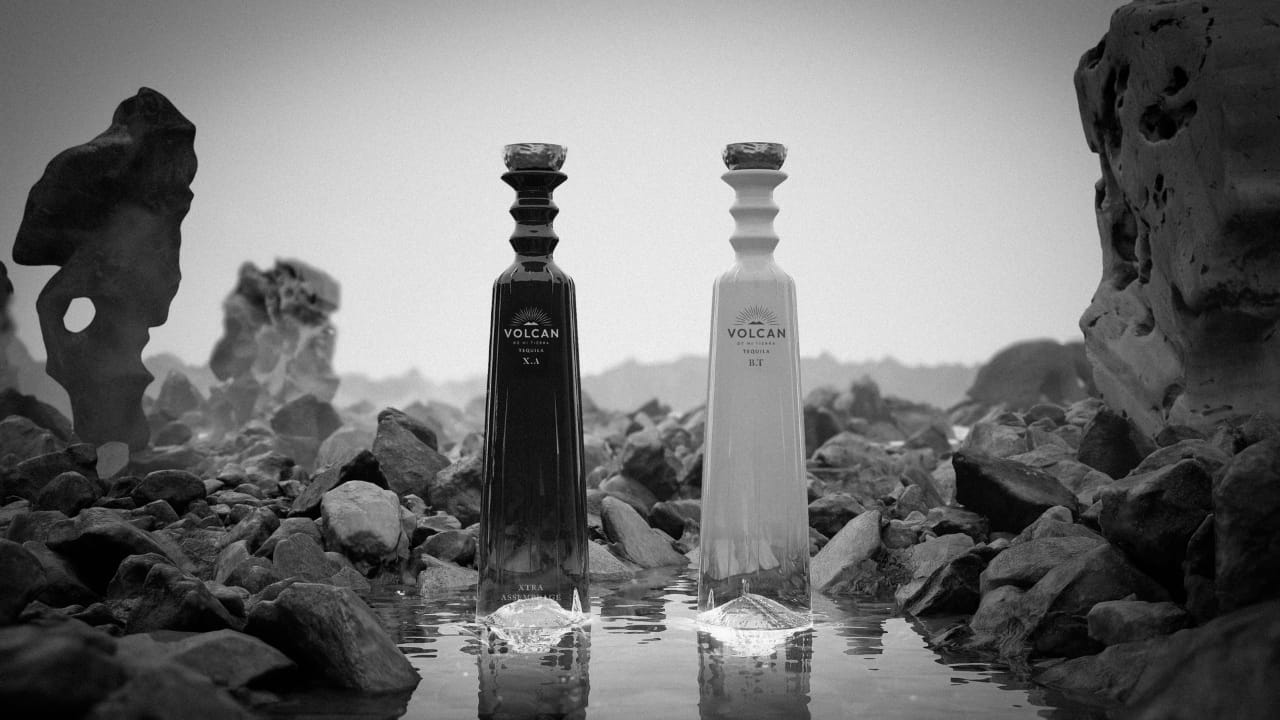
In the present day, the debonair Santiago Cortina Gallardo, the CEO and co-founder of Volcan tequila, hosts visitors at this very same hacienda where his grandfather was born. Although the family had been producing mezcal (spirit distilled from any type of agave) for a long time, the inception of Volcan tequila was a relatively more recent affair dating back a decade ago to 2014.
A serendipitous meeting between Santiago’s uncle, Don Juan Gallardo, and various Louis Vuitton Moët Hennessy (LVMH) top executives saw the former raise a question, as to why the leader of wines and spirits did not yet own a tequila, especially against a growing backdrop of premium tequila and with stories of US$1 billion valuations of other tequila brands. In a further meeting with LVMH owner Bernard Arnault, Don Juan Gallardo struck up terms for a tequila project, under one very clear condition and principle, in that “we need to be the best tequila”.

“That sealed the deal,” Cortina Gallardo recounted to a select group of guests who had made the journey to Guadalajara in July this year. Among the guests were Moët Hennessy Diageo’s Singapore and Malaysia managing director Patrick Madendjian and Singapore-based entrepreneur Anish Jain, who had made history with Volcan as its first client to purchase an Alta Costura Volcan Programme cask, the most expensive single cask of tequila in the history of this spirit, one which would be unveiled later during the visit.
It Began With A Volcano
In present-day Mexico, the land and its people remember its past. Native Mexican languages are still spoken; the food is salt-of-the-earth with corn, beans, meat and cheese transformed into delicious repast. And around the year, Mexicans participate in ancient traditions honouring ancestors such as el Dia de los Muertos, which is celebrated with aplomb.

Some 200,000 years ago, the volcano that would be later named Tequila erupted, covering the area in rich volcanic soil. Many surmise that its name is derived from the Nahuatl language meaning ‘the place that cuts’, for the many pieces of obsidian found in the area, formed by cooling volcanic glass.
Today, in the shadow of this long-dormant volcano, the beneficiaries are blue agave, which thrive along the slopes of the volcano, as well as the entire tequila industry who are able to grow and harvest the prolific Weber blue agave, which, by law, is the key ingredient in tequila making. This specific variant of Agave Tequilana was identified by German naturalist Franz Weber as the optimal species for producing tequila, thanks to its high sugar content and maturation within the period of six to eight years, compared with some agave that take nearly two decades to bloom.

“The name Volcan came to us like a bolt of lightning, and is an homage to the volcano,” Cortina Gallardo says, as the group arrives in the distillery to the sight of hijuelos—young agave crowned with spiky leaves. The fascinating cultivation of agave—most closely related to the asparagus—is its ability to thrive with just a litre of water annually. Upon maturity and just before it flowers—to prevent sugars from being diverted—the fruit is harvested by a jimador, farmers primarily skilled in unearthing the fruit, who then chop off the spiky leaves, the latter of which are left on the ground to fertilise the land. The neatened fruit (or piñas)—weighing between 30kg and 35kg—are then trucked to the distiller. On average, each fruit will yield between five and six bottles of Volcan tequila, a sign of its adherence to be additive-free, the highest standard of tequila production which represents only a minority of tequila brands.
A lot of the hard work in being additive-free is down to the patient growing and harvesting of mature agave as well as proper extraction of agave juice, which Volcan carefully applies across its entire production process.
The Myth of 100 Per Cent Agave
In the case of other tequila producers, to hasten the process, many makers use a chemical extraction where entire fruits are hydrolysed and its juice is distilled. This, however, causes the resulting drink to entirely lose the rich aromas and nuances of a more traditional method.

To make up for this, caramels, stabilisers, wood flavour and glycerine are added—up to the one per cent of additives allowable under a 1974-established Mexican standard (NOM, which stands for Norma Oficial Mexicana), which works out to be approximately 75g for every litre. This also leads to a misnomer afflicting tequila’s reputation in the market. Although labels claim to be 100 per cent agave, the allowable one per cent of additives, which need not be declared on the label and operate under a good faith system, affect the real taste of tequila and frequently result in hangovers.
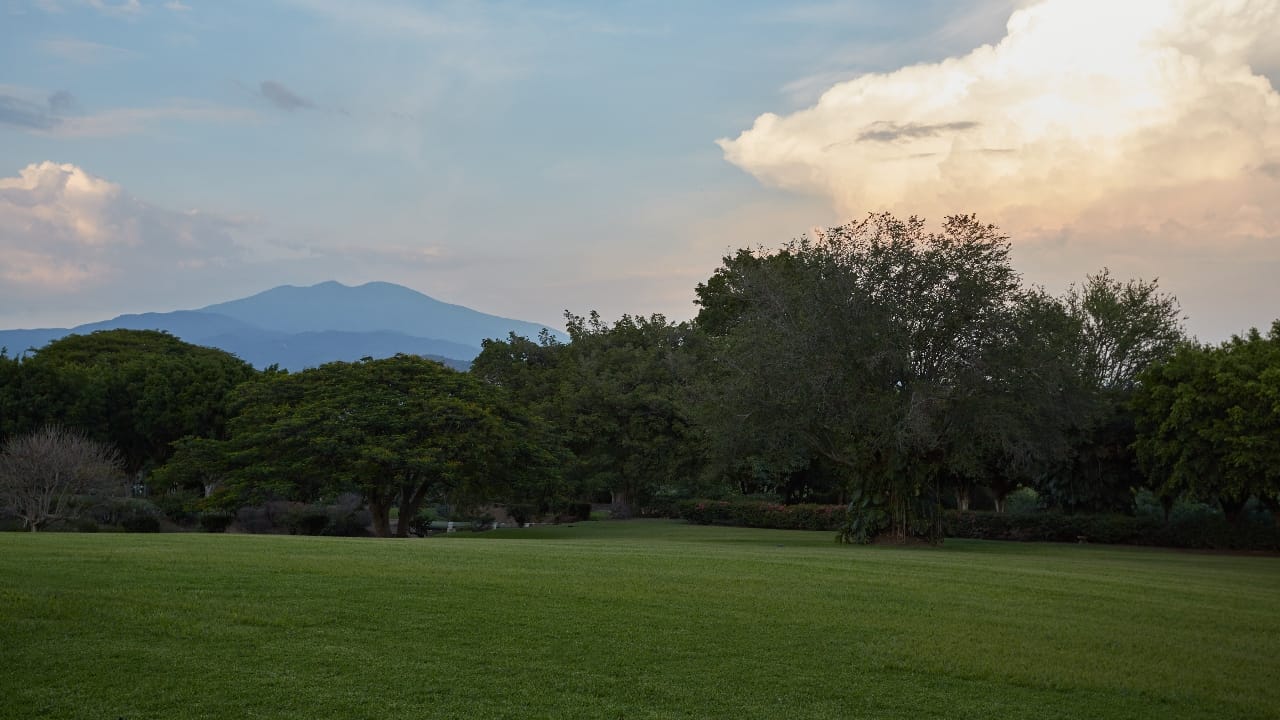
Across nearly 20,000-plus tequila variants and more than 1,400 registered brands, only 151 licensed tequila distilleries exist. This has led to pushback by the market and the rise of independent information websites such as Tequila Matchmaker, which introduced a ‘Confirmed Additive-Free’ certification to its database. At the time of publishing, the site currently lists a total of 482 additive-free tequila variants including the entire portfolio of products from Volcan, from a staggering pool of 5,310 tequila options.
The Scent (And Taste) Of Real Tequila
As we watch piñas being loaded into stone ovens—placed correctly to ensure an optimal braise—Cortina Gallardo asks, “What should real tequila smell like?” The answer arrives on a plate with pieces of cooked agave: malty, caramelised and fibrous with some similarity to sugar cane. On the nose, it carries an intriguing fragrance of pineapple and brown sugar, and a bite releases a rich, smoky sensation of honey, maple syrup and hints of coffee.
Cooked agave, that telltale sign of additive-free tequila, is present across Volcan de mi Tierra’s entire range of tequilas, as the distillery eschews the idea of chemical extraction. In addition to the ovens that cook agave for 36 hours, the distillery also uses 60-tonne bearing autoclaves for the highland agave—less fibrous and hence producing softer spirits and fruitier accents.

Another traditional method is then employed with the stone oven-cooked agave, which is crushed with a tahona, a volcanic stone wheel, to squeeze out juices, thus adding a distinct minerality to the mosto or juice. When compared with the chemical process, the tahona method produces less than a third of tequila from the same amount of agave.
Fermentation happens in Mexican fir oyamel-wood vats with natural yeast added to the lowland mosto, while a duo of sparkling wine and rum yeast does its magic to mosto in steel vats. A double distillation with copper vats then ensues, where the rich and precious heart of the alcohol is cut, chill-filtered at -11° to capture fatty acids, and eventually sent to steel vats (freezing a bottle of tequila is thus a very good trial of quality tequila as only the higher-range tequilas undergo this process). It is at this point where the tequila blanco is finally ready for bottling.
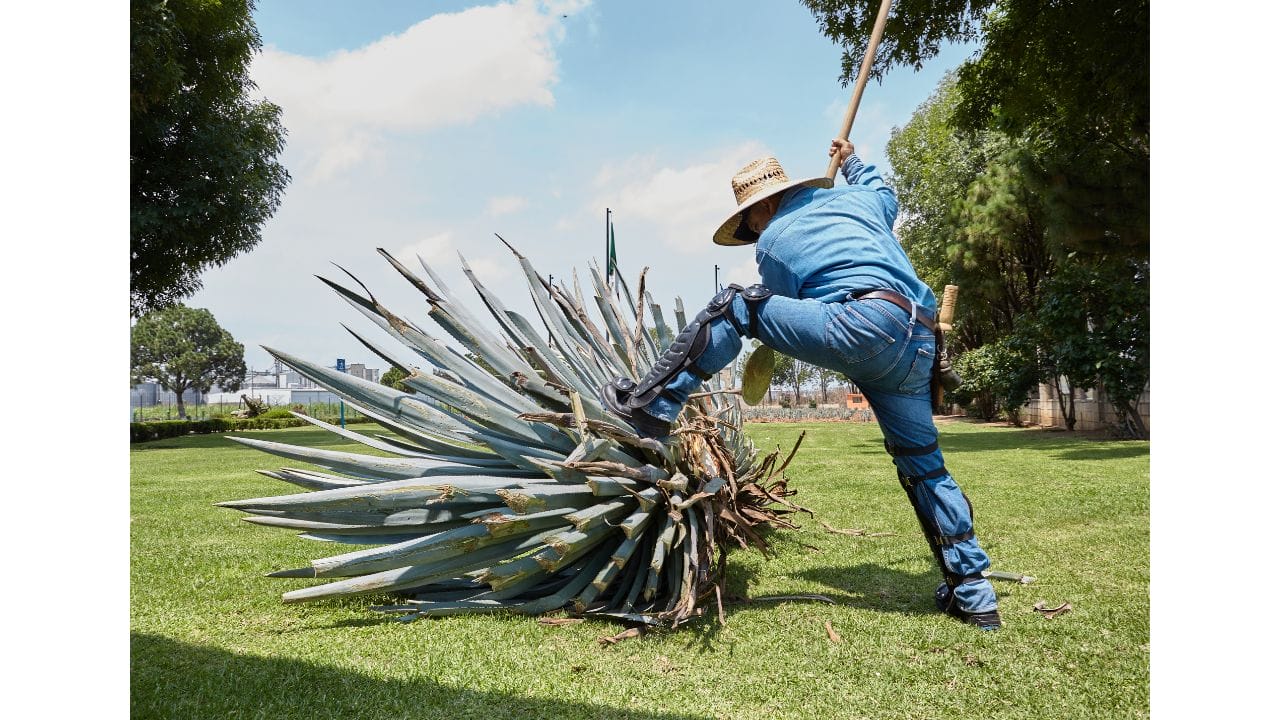
For the ones that see the inside of barrels, the familiar terms attached to it are reposado (two months to a year), añejo (a year to three years) and extra añejo (three years and above). All along the way, Volcan sticks firmly to its additive-free process, preferring to introduce new flavours and profiles in its spirits via assemblage, a method far more common in cognac and an undoubted benefit of Moët Hennessy’s savoir faire.
The Beauty Of Assemblage
In the beautiful cellars of the Volcan distillery, hollowed from rock beneath the distillery, Cortina Gallardo leads the group with Anish, Madendjian and I towards the cask that Anish decided on. For Anish, the discovery of Volcan was a recent one. “I never liked tequila until a Colombian-Japanese friend introduced me to a tequila, shaken with ice, about two years ago,” he says. “It was one of the best weekends I ever had.

“That was when I got started—though most spirits are downers, tequila puts me in a good mood and gives me positive energy,” Anish adds. Volcan would soon enter the picture as he was introduced to it by Madendjian at a 7am tasting with Cortina Gallardo himself, who had flown into Singapore. “It was a good session and, between the reposado and the X.A,
I became a fan—it was my drink of choice at a music festival in Singapore last year!”
The luxury of assemblage that Volcan applies to its tequila has also meant that it is able to produce unique, exquisite finishes for its discerning clientele. An example is the X.A, which combines three layers of ageing before it is finished with American oak.
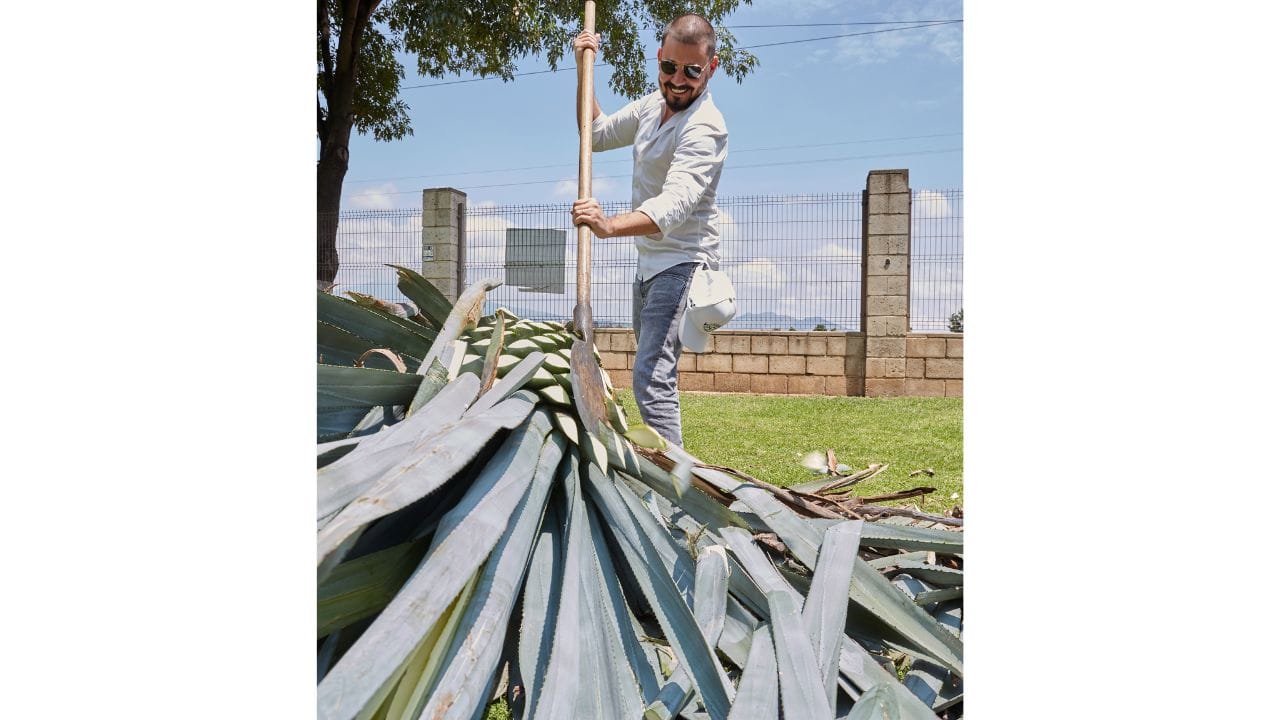
Through this alchemy of finishing and the wide-ranging options available to Volcan, thanks to its greater Moët Hennessy family, the distiller and its maestro tequileros have been able to create—with some help from notable personages like Dr Bill Lumsden of The Glenmorangie—alta costura tequila, all based on its base additive-free luxury spirit.
For Anish, his experience with the version finished in a Sauternes cask was an instantaneously memorable moment. “I’m an investor in a private membership club and we do a lot of casks for our members,” he says. “We understand the importance of sharing an experience with your circle of friends—to generate memories that you can really hold on to and remember.”
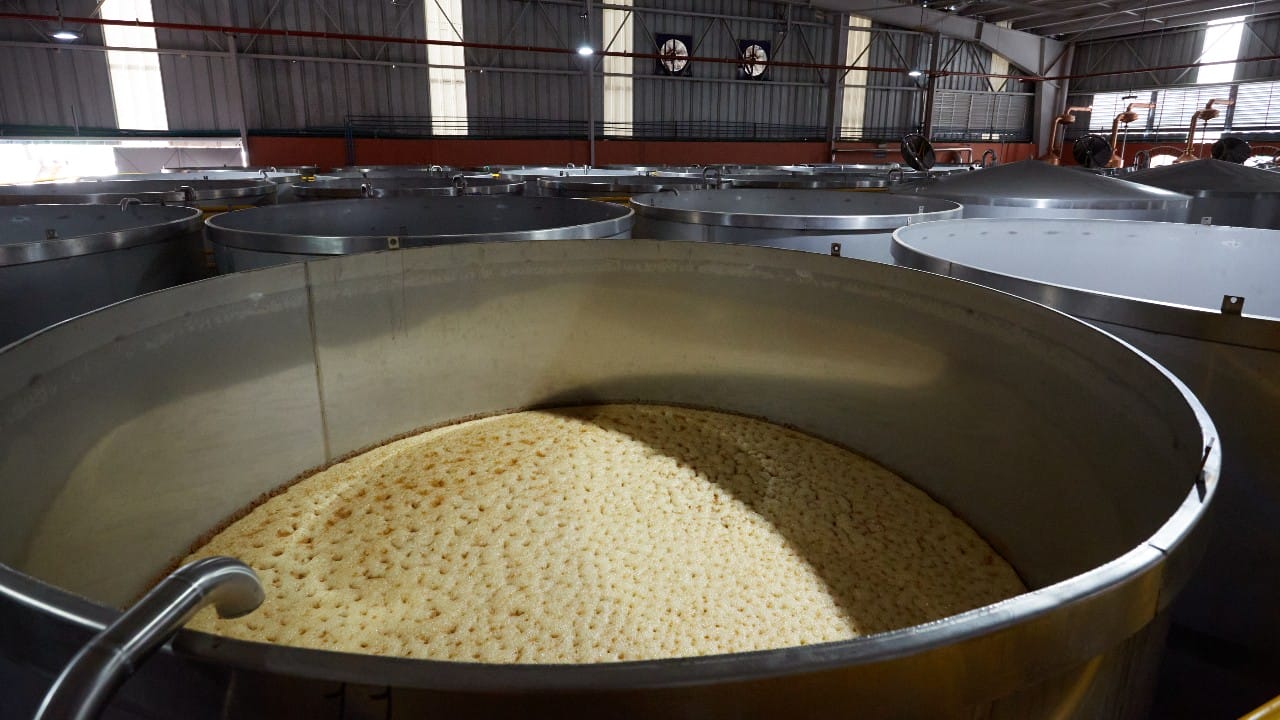
He remembers tasting some samples of Volcan tequila that had been finished in a variety of different casks over a dinner at the Mandarin Oriental Singapore. For him, the standout was Volcan de mi Tierra añejo finished in Barrel Number 8—first aged in European oak on 6 January 2023 and finished in the Sauternes barrel, a duration of precisely 414 days. In making his decision to purchase, Anish also inadvertently made tequila history, becoming the first purchaser of Volcan’s alta costura tequila cask and, also, the distinction of the most expensive cask ever purchased in tequila history.
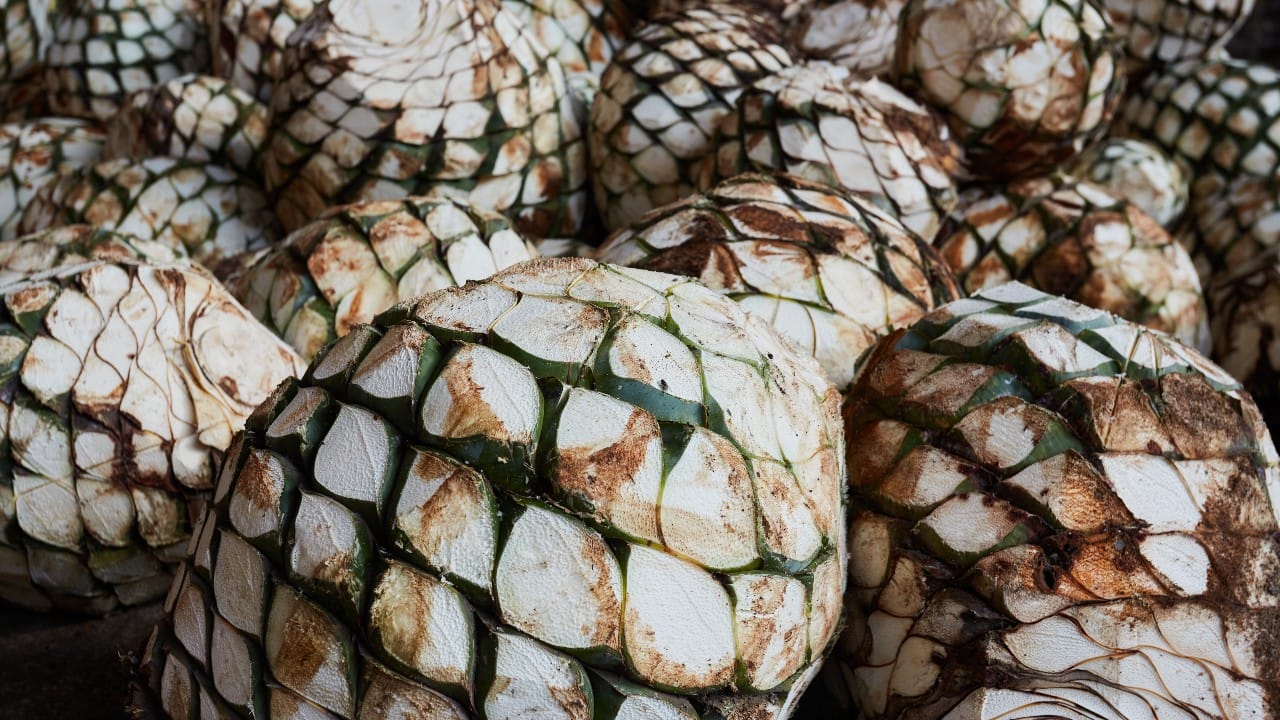
Back at the distillery cellars in Guadalajara, the group is greeted by his unique cask, one which will never again be replicated. In it contains a luminous and clear tequila with golden and light amber hues, rich with aromas of fresh agave, anise, caramel and a hint of vanilla while fine wood and floral notes bring up the rear. In the tasting of this unique Sauternes cask finish, Cortina Gallardo leads by saying the first sip is always the hardest. “You have to wet your lips—let your body know that something good is going to happen.” Then, Gallardo advises, “you take a sip followed by an intake of air into your mouth, before exhaling to fully taste the tequila’s full character.”

When correctly applied, sheer magic starts to suffuse your senses. The version, finished in the Sauternes cask, begins with a distinct nose of cherry, segueing into orange notes, and, on the palate, blossoms into hits of sarsaparilla, toasty notes of soft wood and dried fruits with a long, lingering finish. Here, in the cellar, surrounded by more than 3,000 barrels of tequila sitting inside American and European oak, the group is transfixed by the incredible potential that tequila has yet to fulfil.
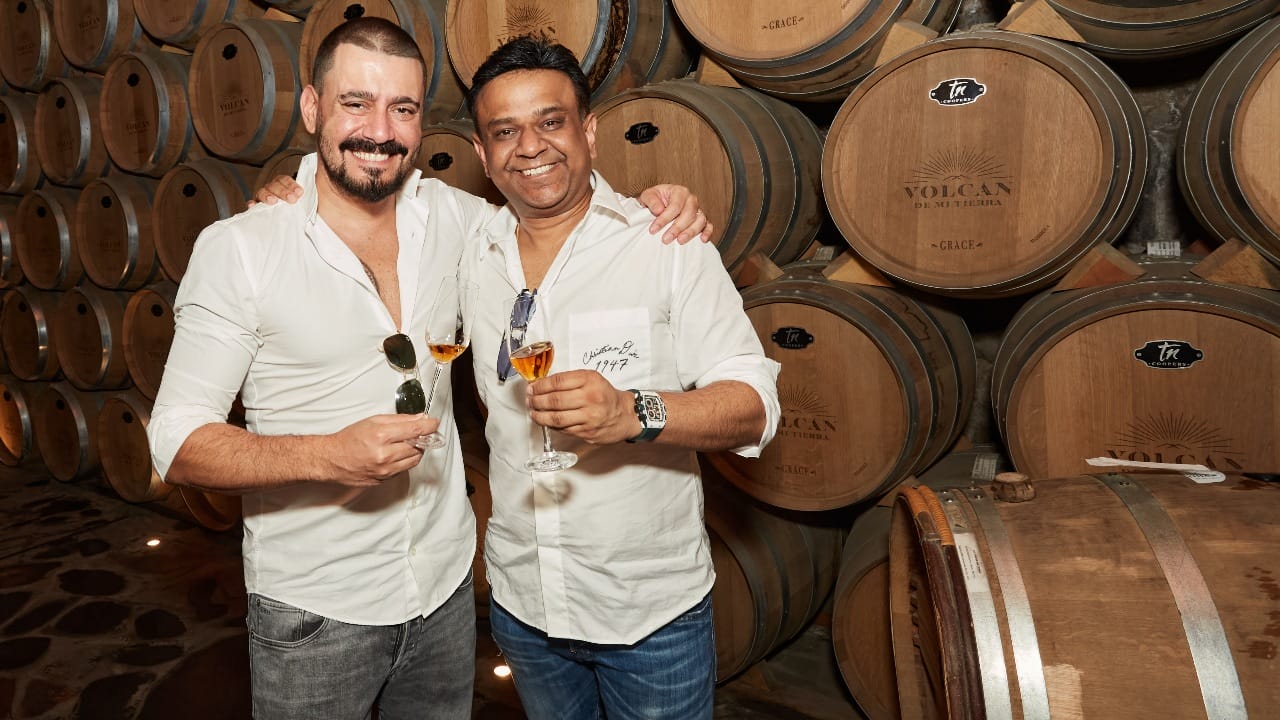
As for Anish, whose cask will yield approximately 250 bottles of tequila—each 700ml—he is already looking into how he can further enhance the process of customising such a unique expression of tequila. “I love that I’m able to personalise this cask and to share with my friends, the chefs at restaurants where I love to dine, my business partners, and fellow supercar owners,” he says. He plans for about 100 ultra-customised bottles to be done by a Japanese artist so that the bottles may take pride of place at the bar even after the tequila has gone. “And while they wait for the next one,” he says with a smile.
Volcan De Mi Tierra
Back at the hacienda and during a cool evening, the group convenes at a garden while enjoying raspados, a Mexican shaved ice dessert with the volcano looming in the distance. “When it comes to it, Volcan transmits the true meaning of tequila,” Madendjian reflects. “It is a spirit that is done with 100 per cent heart and really with 100 per cent agave.” This is why de mi Tierra is in the full Volcan name, which means “of my land” in Spanish.
“Our 50-50 share ownership is very meaningful,” says Cortina Gallardo of the unique partnership with LVMH. “It means that we learn from Moët Hennessy’s savoir-faire and the commitment to quality and craftmanship behind their brands, while adding a notion of luxury and creativity to everything that we do.”

For him, tequila’s immense boom in the world has been a profound mirror of what the Mexicans have always been. “Mexican culture is a happy culture and becoming cool,” Cortina Gallardo says. He surmises that this latter Mexican wave has to do with the release of films such as the 2017 Disney animated flick Coco, the Bond movie Spectre, the gradual proliferation of its comforting cuisine, and colourful festivals such as Cinco de Mayo and the Day of the Dead.

And, of course, tequila’s cause has also been furthered by the radical involvement of Hollywood celebrities such as George Clooney, The Rock, as well as other movie stars, star athletes, socialites, and one of the world’s highest-paid supermodels, Kendall Jenner, who launched her tequila brand in 2020.

Although the process of producing Volcan tequila can be exhaustive—the distillery is manned by 120 employees who work across three shifts—Cortina Gallardo is adamant that no shortcuts can be made. “We need to control the process to produce the desired tequila,” he emphasises. From the concept of terroir to that of assemblage, the result has been a prestige tequila that tastes like the very essence of tequila.
Photography: Atiba Jefferson, Carlos Garza for Moët Hennessy




